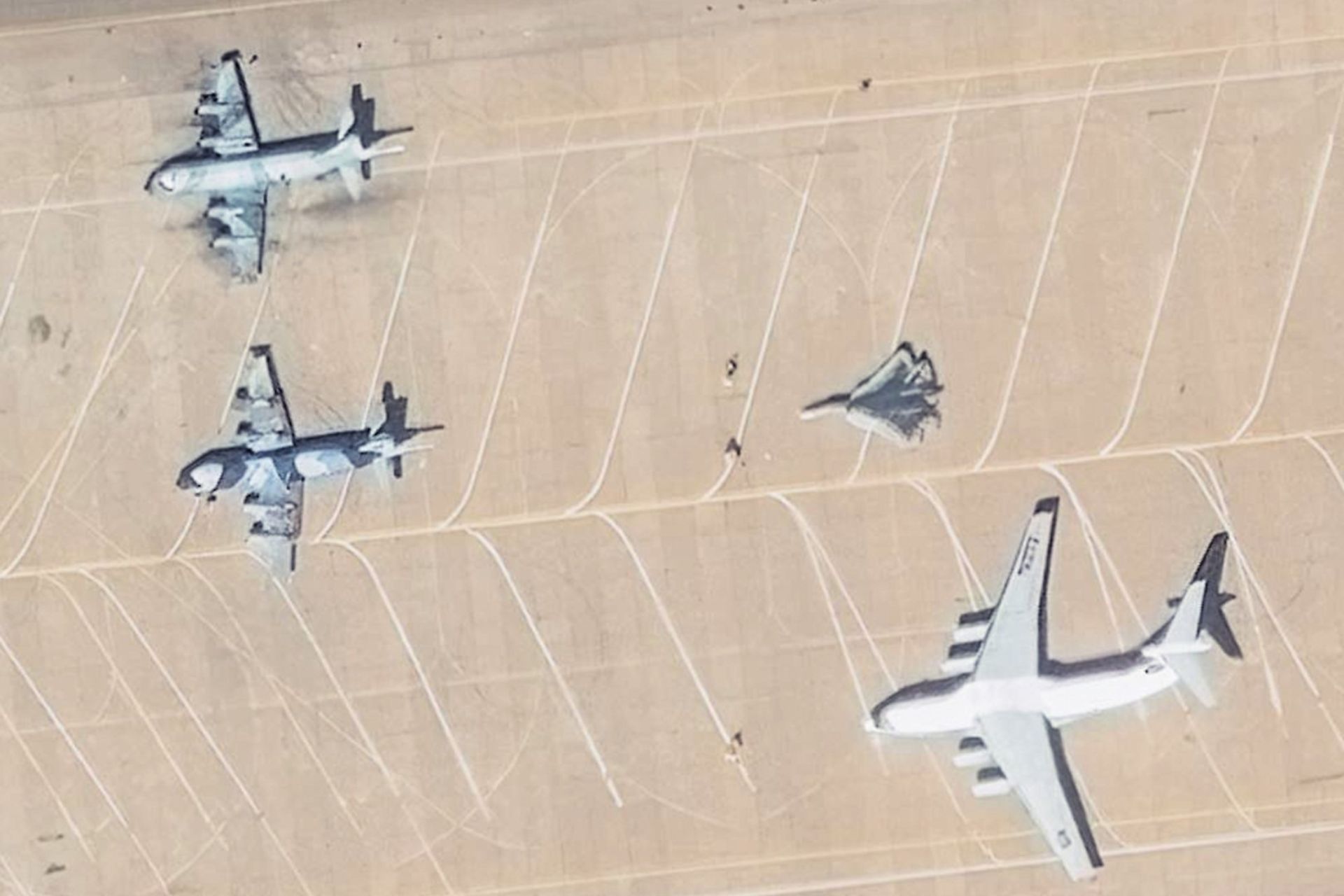Breaking News
Russian Su-57 Felon Fighter Jet Visits Iran for First Time in Possible Sale Deal.
A viral satellite image has confirmed the first recorded presence of a Russian Sukhoi Su-57 stealth fighter at an Iranian Air Force base. The aircraft, designated "Felon" by NATO, was identified at Bandar Abbas Air Base, located on Iran’s southern coast, shortly after participating in the Aero India 2025. According to analyses from The War Zone, satellite images from Maxar Technologies dated February 19 clearly show the Su-57 at Bandar Abbas. This event, marked by promotional efforts from United Aircraft Corporation (UAC) and Rosoboronexport, appears to have led to the confirmation of the first sale of the aircraft to a foreign customer.

The Su-57 is designed to ensure air superiority and execute precision strikes, integrating advanced stealth capabilities, supermaneuverability, and thrust-vectoring engine (Picture source: Vitaly V. Kuzmin)
According to Maxar Technologies’ satellite images dated February 19 show the Su-57 at Bandar Abbas, parked alongside two P-3 Orion maritime patrol aircraft acquired from the United States during the Shah’s era, as well as a Russian Il-76 transport plane. Additional images captured on February 21 confirm the aircraft’s prolonged presence at the Iranian base. Viral videos have also surfaced, showing the Su-57 on the tarmac next to an Il-76 bearing the registration RA-76373, which was also seen in India a few days earlier.
The aircraft has been identified as the T-50-4 prototype, bearing the bort number “054 Blue,” one of the primary models used in the international promotion of the Su-57. After participating in the Zhuhai Air Show in China last November, this aircraft was later showcased in India, where it shared the stage with U.S. F-35s, which were also exhibited in both static and flight displays.
The Su-57’s stop in Iran has raised numerous questions regarding its purpose. While some reports suggest that the aircraft may have experienced an engine issue, delaying its departure, others speculate that the visit may have had a strategic objective. The presence of the fighter at an Iranian base takes place in the context of strengthening military ties between Moscow and Tehran, particularly as Russia continues to receive Iranian support in military operations in Ukraine, including the supply of kamikaze drones and assistance in their domestic production.
If Iran were to consider acquiring the Su-57, it would mark a significant upgrade for its aging air force, which largely consists of American aircraft acquired before the 1979 Islamic Revolution and older Russian models. The Su-57 is designed to ensure air superiority and execute precision strikes, integrating advanced stealth capabilities, supermaneuverability, and thrust-vectoring engines. It is equipped with the N036 Byelka AESA radar, the L402 Himalayas electronic countermeasures suite, and the 101KS Atoll electro-optical system, which includes an infrared search and track (IRST) sensor and laser countermeasures. Its armament includes long-range air-to-air missiles such as the R-37, air-to-ground missiles like the Kh-38M and Kh-59MK2, and anti-radiation missiles such as the Kh-58UShK. Additionally, it features an internal 30mm GSh-30-1 cannon for close combat engagements.

In the image published by The War Zone, the Russian Su-57 Felon fighter jet was identified in Bandar Abbas, Iran, on February 19, 2025 (Picture source: MAXAR Technologies)
Earlier this month, an announcement regarding the Su-57’s first confirmed sale to a foreign customer, most likely Algeria according to the country's state television, has fueled speculation about further potential exports. Could Iran be the next buyer? If Tehran were to acquire this aircraft, it would face significant logistical and technological challenges, as the Su-57 is a next-generation fighter requiring advanced infrastructure, specialized pilot training, and sophisticated maintenance capabilities. Furthermore, any acquisition by Iran would face restrictions due to international sanctions limiting access to advanced defense technologies.
Nonetheless, Russia may seek alternative solutions to navigate these restrictions, potentially adapting Su-57 technologies to align with Iran’s industrial capabilities, as has been done with other military equipment supplied in the past. In any case, the Su-57’s first recorded presence on Iranian soil opens the door to potential discussions, as Tehran aims to modernize its air force and enhance its defense capabilities amid growing regional tensions. This development could further solidify the strategic partnership between Moscow and Tehran, particularly in the context of military operations in Syria and broader bilateral defense cooperation.


























